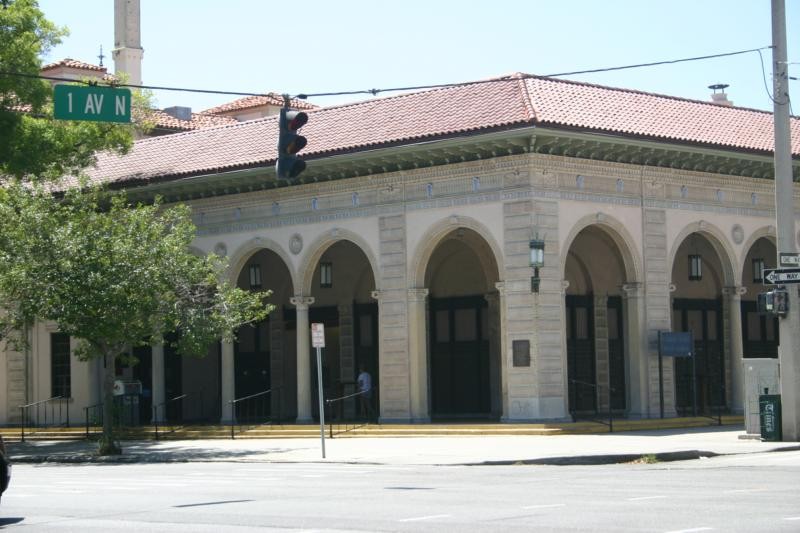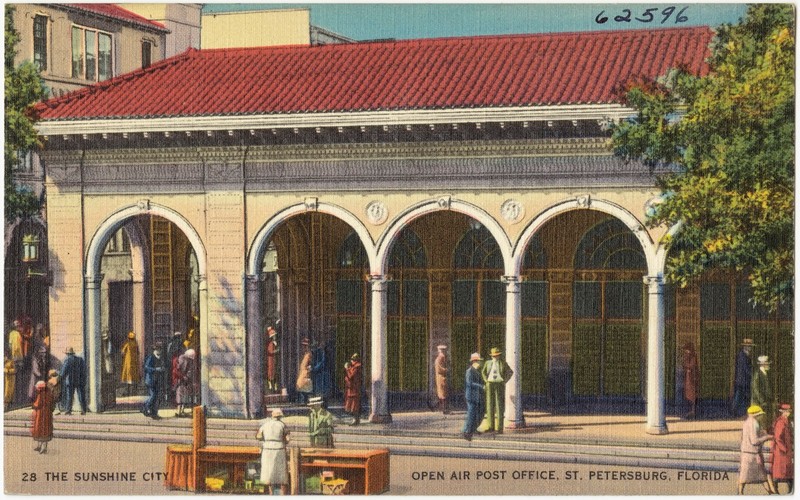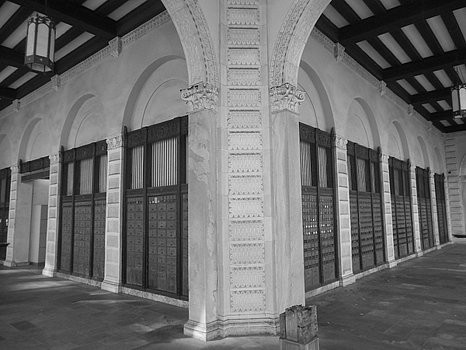United States Post Office
Introduction
Text-to-speech Audio
Constructed in 1916, this post office was designed by architect George Stuart in the Mediterranean Revival style, which would become one of the most popular types of architecture in the city. While most of the earlier public buildings were designed in the Mission style, the post office was one of several buildings that mixed terra cotta with large and open building facades to encourage air flow through St. Petersburg's buildings in an era before air conditioning. The postmaster for the city took part in the building design, working with the architect to create a building that patrons could enter from any side of the street to have better access to their mailboxes and needed services.
Images
This open-air Mediterranean Revival post-office was completed in 1916 and remains one of St. Petersburg's most iconic downtown buildings.

A postcard of the "new" post-office circa 1920.

The building's original design allowed box owners to access their mail at any time. Today, the postal boxes are enclosed.

Backstory and Context
Text-to-speech Audio
By 1916 when the post office was built, St. Petersburg (and Florida in general) had become increasingly prosperous thanks to tourists and development. The new post office was built in the midst of this growth. As alluded to above, the local postmaster, Roy S. Hanna, wasn't happy with the proposed design of the new building and instead submitted designs created by St. Petersburg architect George W. Stuart. Hanna recognized that a more open building was more appropriate for a warm climate. Instead of having mailboxes inside the building, they are located along the exterior walls. The colonnades (arches) cover these areas and the entrances to the building.
Congress appropriated money for purchasing the property in 1909 and later the funds for construction in February 1915. Construction began in October 1916 and the building was completed in September the next year. The post office is visually striking as it features the aforementioned arches, a significant amount of decorative terra cotta detailing, and a Spanish tile roof. The building is both utilitarian and a great example of architecture that is meant to be a landmark.
Sources
Greer, Diane D. "United States Post Office." National Park Service - National Register of Historic Places Nomination Form. April 4, 1975. https://npgallery.nps.gov/AssetDetail/NRIS/75000564.
Horn, Bob. "Assignment: St. Petersburg, A Look At St. Petersburg Places, People, City Life, Happenings, History and More." Accessed October 26, 2016. http://stpeterealestateblog.com/blog1/2009/10/24/st-petersburgs-open-air-post-office.
"United States Open Air Post Office," City of St. Petersburg website, http://www.stpete.org/historic_preservation/historic_landmarks/local_landmarks/docs/Open_Air_Post_Office.pdf.
